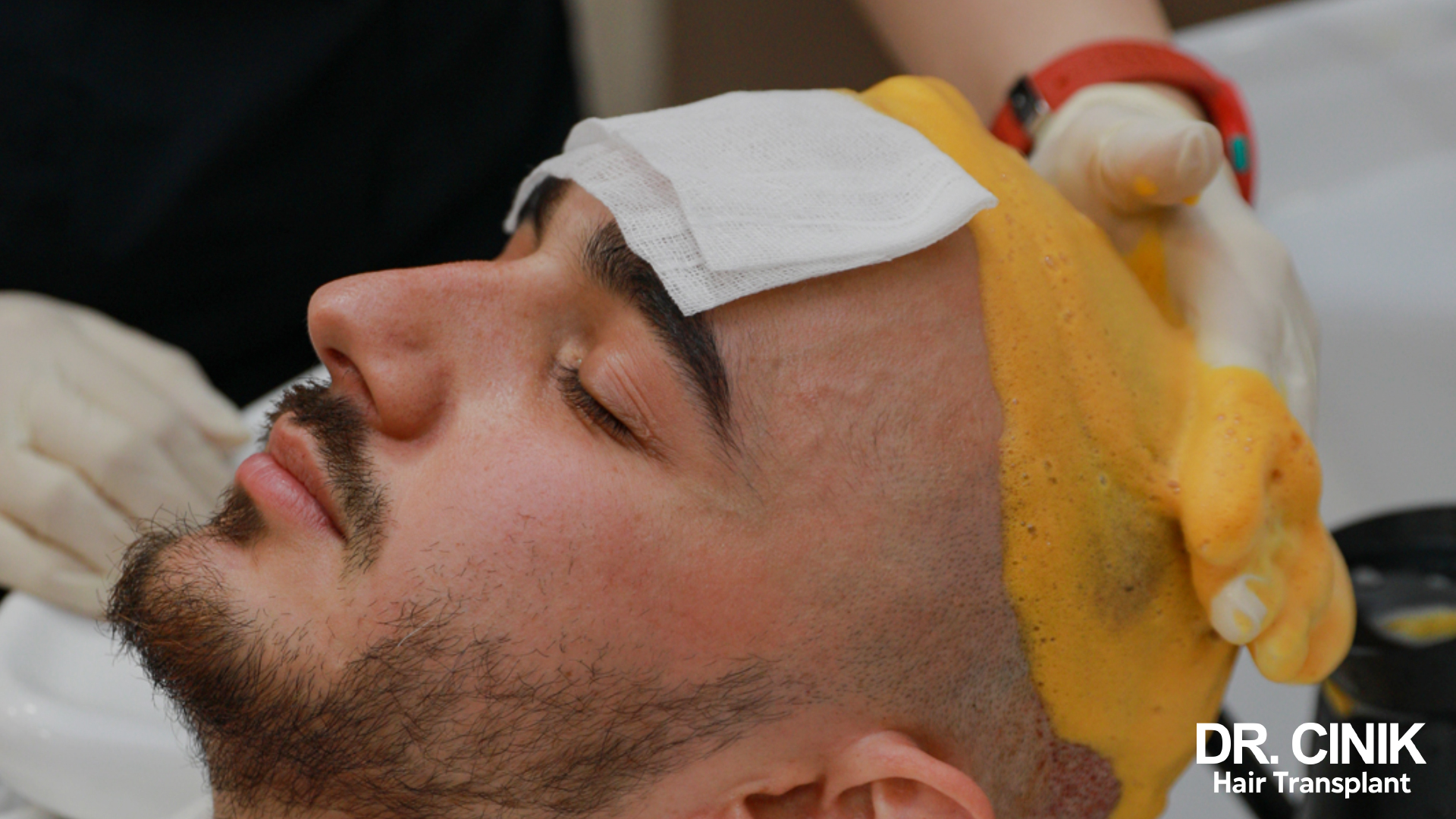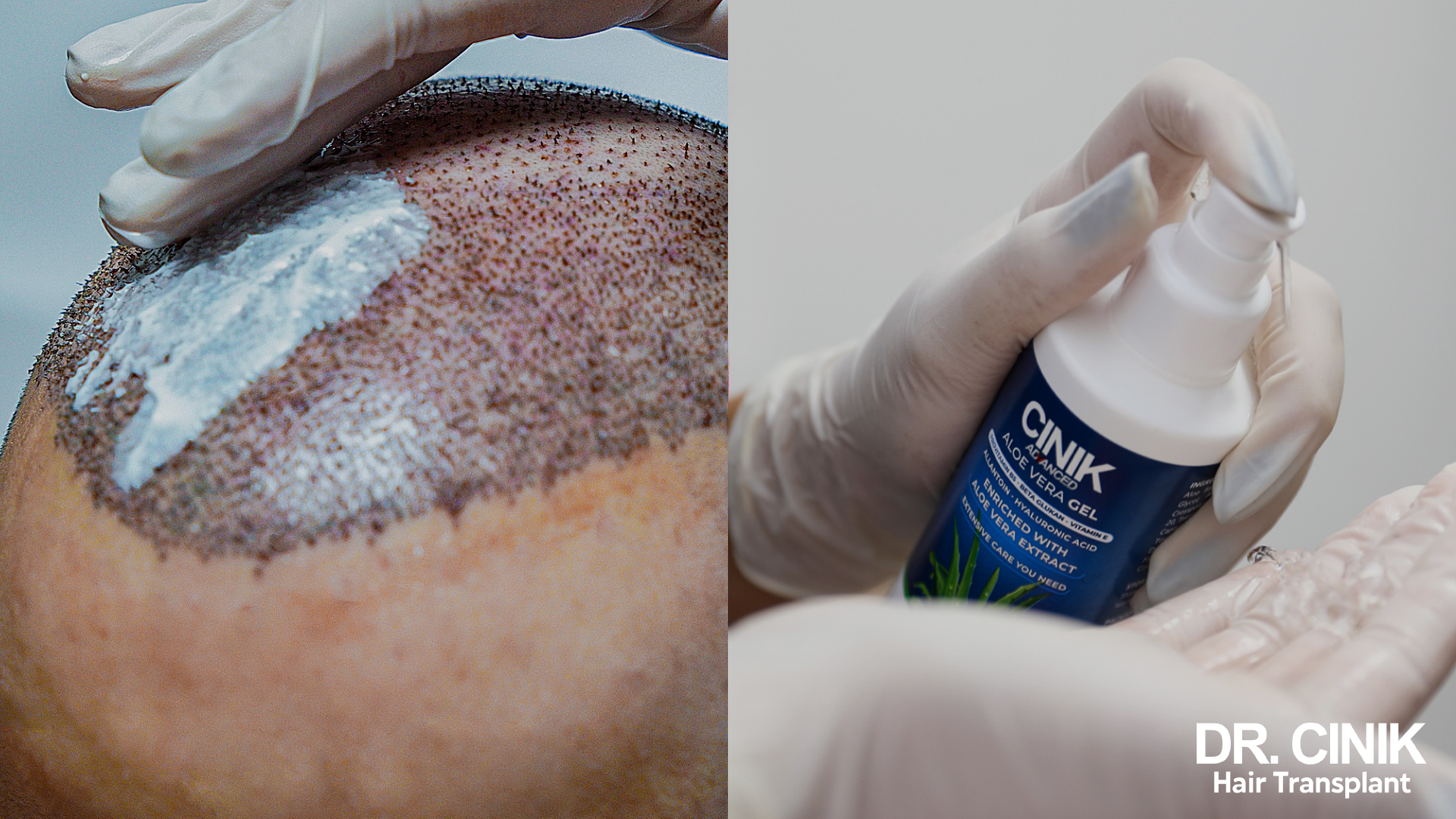Hair transplant 5 days after evolution and post-operative care

Sommaire
The period immediately following a hair transplant is crucial to the procedure’s success. The first five days, in particular, are fundamental to the rigorous post-operative care required. During this phase, the scalp remains susceptible to infection or damage to the transplanted follicles. It is, therefore, imperative to carefully follow the instructions provided by the surgeon. Find out how the hair transplant evolves during the first 5 days, the normal signs of healing, and the specific measures to adopt to optimise recovery and maximise the transplant results.
Scalp condition and healing 5 days after a hair transplant
The scalp enters a delicate healing phase five days after a hair transplant. At this stage, it is normal to observe slight bleeding around the implants, a sign that the body is healing. The incisions made to insert the grafts are usually still visible, although they should begin to heal.

The formation of scabs is also an expected phenomenon and part of the natural healing process. These scabs protect the affected areas from infection and help keep the grafts in place while the follicles attach to the scalp. It is essential not to scratch or rub these scabs to avoid damaging the new implants and disrupting healing.
Appropriate post-operative care, including gentle cleansing and the application of prescribed products, is essential to promote optimal healing and ensure the long-term success of the transplant.
Post-operative care
The first two days after the procedure are particularly important in post-operative hair transplant care. During this period, a headband is placed on the forehead, not directly over the grafted areas, to prevent scalp swelling. This headband helps keep the area stable and reduces the risk of bleeding or oedema spreading to the face. It is crucial to follow the surgeon’s instructions regarding wearing this headband to ensure that it is used effectively without disturbing the grafts.

The care routine in the first days after a hair transplant
After a hair transplant, postoperative care is essential to ensure proper healing and optimal hair regrowth. The routine to follow is :
- Application of a panthenol foam: start by applying a foam containing panthenol to the grafted areas, leaving it on for around 30 minutes. This foam will help to clean the area and soften scabs without damaging the new grafts.

- Rinsing and shampooing: after applying the foam, rinse gently with lukewarm water, using a jug of water to avoid directing the shower jet onto the area. Then, use the specific shampoo supplied by the clinic, applying it carefully without rubbing directly onto the grafts.
- Drying: dry the donor area with a clean towel, while the grafted area should be left to dry naturally in the open air to avoid disturbing the grafts.
- Application of aloe vera: gently apply aloe vera gel to promote healing and soothe the donor area.

Wash your hair once daily, morning or evening, at your convenience. From day 11 onwards, modify your routine to help gently remove the scabs without forcing them. After 30 days, you can resume your usual hair routine using the shampoo you choose.
More about shampooing after an hair transplant
Instructions to follow in the first few days after a hair transplant
During the first few days following a hair transplant, it’s important to follow a series of instructions to ensure optimal healing and avoid compromising the results of the procedure:

- Why Avoiding Sun Exposure After A Hair Transplant Is Essential and extreme temperatures, hot or cold, which could affect the transplanted area.
- Strictly follow recommendations for washing the head and using specific hair and scalp treatment products.
- Watch out for any signs of infection or abnormal irritation, and contact your healthcare professional immediately if you have any concerns.
- Eat a balanced diet and stay hydrated to support the body’s healing process.

- Limit the use of styling products and heat tools until the scalp has fully recovered.
- Get enough rest to promote repair and cell renewal.
- Follow your surgeon’s instructions about sports and sexual activity.
These measures, although simple, are essential to ensure the best possible results from your hair transplant.
Managing common side effects
It’s normal for patients to feel some tension or tightness in the treated areas after a hair transplant. These uncomfortable sensations are usually temporary and tend to disappear over the weeks.
It is possible to take analgesics to alleviate itching, which can help reduce discomfort. However, it is essential to do so under the surgeon’s instructions to ensure proper healing and not disrupt the recovery process.

Edema is also a common side effect after a hair transplant. It manifests itself as swelling of the scalp or face and can be managed with measures such as keeping the head elevated while sleeping. It’s also important to avoid alcohol and tobacco, which can slow healing and harm the new grafts.

Appropriately applied cold compresses can also help reduce swelling. These simple measures can help manage this common phenomenon and improve comfort in the post-operative period.
 en
en



